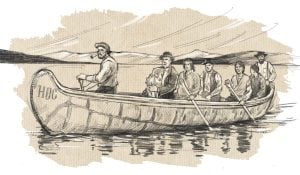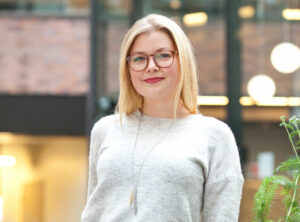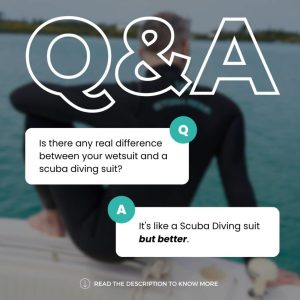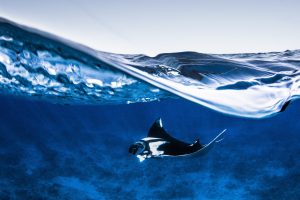Travel
Discovering beauty and resilience on the world’s second-largest barrier reef
- Apr 11, 2024
- 1,881 words
- 8 minutes

Overcoming challenges and recovering from setbacks is an essential trait for personal and professional success. Kids with resilience can thrive, too, along with entire nations.
In Belize, tourism plays a vital economic role where the pandemic’s impact was particularly brutal, destroying livelihoods, businesses, and decades of momentum. But by early 2024, the small Central American country announced that visitor numbers had dramatically exceeded record figures achieved in 2019. Blessed with rich biodiversity, ancient Mayan ruins, sandy beaches, gorgeous islands and the world’s second-largest barrier reef, Belizeans can be proud of their recovery. And I’m hoping it will inspire my 10-year-old daughter Raquel, who is four skills away from being fully certified as a PADI Junior Open Water Diver. Four skills seemingly out of reach as she makes a hand gesture to prematurely end her final dive and return to the surface.
As an avid diver, I’d long heard about the 300-kilometre-long Belize Barrier Reef, home to more than a hundred coral species, 500 species of fish, and the famous Great Blue Hole. With Australia’s Great Barrier Reef heavily impacted by climate change, I was curious to see how this lesser-known but no less spectacular reef was holding up in terms of both tourism and conservation. When my daughter Raquel expressed an interest in joining me, I discovered that kids as young as 10 years old can get fully certified to scuba dive. She’d need to pass an extensive e-learning course, complete a busy weekend of class and pool instruction, and prove her know-how with four challenging ocean dives. Assuming she could accomplish all this, Raquel would be PADI certified to dive worldwide up to 12 metres with a parent (18 metres for kids 12 to 14), with full certification awarded automatically at the age of 15. Diving teaches kids so much: respect and awareness of the marine environment, curiosity and exploration, the science behind compression, gravity, and respiration, coping under pressure, and, most of all, personal responsibility. Mom and Dad can only help so much when you’re 12 metres underwater.
Looking for advice about kids and scuba diving seemed to fall into two categories: Diving is perfectly matched for young kids, and given the risks, you’re insane to even consider it. It’s all up to the individual child, of course, and not every kid is suited for the challenge, especially those with ADHD like my daughter. Amidst a general misunderstanding and a lot of online misinformation, it’s important to stress that children and adults with ADHD don’t suffer from anything, they are empowered with different neurological abilities. With supportive guidance and positive intentions, very little can stand in their way. Just ask success stories like Olympic heroes Michael Phelps and Simone Biles, Richard Branson, Bill Gates, Barbie’s Greta Gerwig and Ryan Gosling, chef Jamie Oliver, Dave Grohl, and many others. Ultimately, Raquel expressed her excitement to move forward.
We signed up with Burnaby B.C’s Ocean Quest Dive Centre, one of the top diving shops in the country. Raquel completed her e-learning component with an enthusiasm I only wish she showed for her schoolwork. Her instructor, Amy Liebenberg, was everything I could hope for: experienced, patient, inspiring, positive, and a fantastic female role model. They spent a sunny weekend in both classroom and pool, learning about equipment practicing safety drills, breathing techniques, and buoyancy. PADI is the world’s largest ocean exploration and diver organization, operating in more than 180 countries with a global network of 6600 dive centres. With their help, we found Ramon’s Village Divers on the popular tourist island of Ambergris Caye. You can only learn so much online, in a classroom, or in a pool. It was time to hit the barrier reef.
Bordered by Guatemala, Mexico, and the warm Caribbean, Belize is the northernmost country in Central America. Part of the British Commonwealth, Belize has a stable democracy, a small population of about 410,000 people, and a low crime rate. While Creole and Spanish are widely spoken, English is the official language, making Belize particularly amenable for Canadian travellers. Taking a page from Costa Rica, it offers world-class eco-tourism through snorkelling, diving, fishing, caving, and various jungle adventures. Unlike Costa Rica, however, Belize also has well-preserved Mayan ruins dating back thousands of years.
Arriving in Belize City, we shuttled inland to the tourist town of San Ignacio. First, we’d cross a short rope ferry to reach the immaculate Xunantunich Mayan complex, which dates back to 600 AD. Mysteriously abandoned hundreds of years later, the limestone pyramids, burial chambers, stone dwellings and ball courts are all that remain. Jungle heat triggered my daughter’s nose to bleed atop the 40 metre-tall El Castillo pyramid, a fitting blood sacrifice in a spot that saw centuries of ritual human sacrifice. Having scrambled up the ruins, our hands-on adventure continued with cartoonishly cute baby reptiles at the nearby Green Iguana Conservation Project. We topped off the day swimming among festive locals in the cascades of Rio-on-Pools, a series of spring-fed pools descending over granite ledges in Mountain Pine Ridge Forest Reserve.
“When it’s hot like this, you’ll find Belizeans wherever there is water,” our guide explained, carving up another sweet, in-season watermelon.
Jacques Cousteau brought international attention to the Belize Barrier Reef when he named the Great Blue Hole one of the world’s top five diving spots. It’s a long day on the boat to reach this perfectly circular sinkhole, piercing the shallow reef to reach 124 metres deep. With limited time, we hopped aboard Tropic Air’s four-seat Cessna 182 for an hour-long scenic flight over the reef, circling the otherworldly Blue Hole, a shipwreck, and various unpopulated cays (pronounced keys). We land in San Pedro, the bustling town that serves Ambergris Caye, the largest of the country’s 400-plus islands. Getting around the island is half the fun: visitors rent golf carts to drive across a grid of narrow, dusty streets. We check into Ramon’s to meet Pete, Raquel’s local PADI instructor, arrange our dives and hit the town. Belize Food Tours meets nightly in Central Park to guide tourists to San Pedro’s best street food. We start with a large plate of mouthwatering shrimp ceviche, moving on to delectable carne asado tacos, birria, papusas, various Mestizo and traditional Garifuna dishes, and finish with fresh key lime pie. A bottle of Marie Sharp’s ubiquitous Belizean habanero sauce is never far away.
Dozens of boats and hundreds of snorkelers greet us at Hol Chan, a protected marine reserve on the reef off San Pedro. It’s the most popular snorkel spot in the country, but the crowds made it less than ideal for Raquel’s first descent below the seas. Guided by Pete, I watch her successfully tick off a bunch of skills over a couple of dives. Removing one’s mask underwater and successfully putting it back on is perhaps the most challenging test for any diving student. It requires a cool head and an ability to cope with eye-stinging saltwater. Joining her underwater, I could see my daughter struggling. Eventually, she waved her hand across her neck, signalling she’d had enough. Back in town, she beat herself up. I reassured her there was no shame in having got this far, and I was super proud of her whether she got certified or not. We didn’t plan on going back in the water, but Ramon told us they could arrange an early morning dive the following day to give her another shot. Raquel didn’t blink. “Let’s do it!” We’d have to wake up at sunrise, golf cart to the beach, take a small boat to an empty spot on the reef, and see how it goes. This time, I told her I’d stay on the boat. Sometimes, kids do better when their parents are above water.
A few hours later, we’re on a much larger boat with three dozen divers. “Everyone, please give a hand for PADI’s newest Open Water Certified Diver, Raquel!”
Ramon’s clients applaud with boisterous cheers, my daughter beams brighter than the hot sun, and I’m tearing up with pride. Having successfully overcome her final challenge, we had joined a large group heading out for their morning dive. Together, we swam through vibrant canyons of purple sea fans, brain and elkhorn coral, glowing sea rods, and colourful coral plates and sheets. We encountered docile nurse sharks, large eagle rays, beautiful conches, spiny lobster, Hawksbill turtles, moral eels, and countless tropical fish. The remarkable barrier reef felt healthy, vibrant and bursting with life, proving its own resilience to our warming oceans and changing climate. Along with my daughter’s introduction to the joys of diving, it was clear that tourism in Belize has been on a long journey. Yet determination, preparation, opportunity and resilience can take you to some very special places.
Turneffe Flats
Turneffe Flats is an award-winning eco-resort and the definition of paradise for sport anglers, snorkelers and divers. Located 90 minutes by boat, the off-grid resort has become a vital conservation steward for the Turneffe Atoll, the most biologically diverse atoll in the Caribbean. Anglers arrive from around the world to catch the grand slam: bonefish, tarpon and permit. The reef is bursting with life, and the resort directly supports the Turneffe Atoll Sustainability Association, which protects this vast, 24,000-acre atoll from overfishing and unsound development. Powered by the largest solar-lithium battery system in the Caribbean, the resort collects rainwater, composts all its waste, has a closed-loop wastewater system, and has re-planted a former coconut plantation with native species. Guests mingle in the lodge, drink cocktails in the infinity pool, and share daily tales from adventures on the expansive flats and vibrant, healthy reef. Packages include snorkel, diving and fishing safaris, as well as visits to TASA’s head base in Calabash Caye for interpretive walks in the mangrove. Turneffe Flats was hammered by hurricanes in 1998 and 2000, rebuilding better, stronger, and more innovative each time. Along with the fish, resilience is found in abundance here too.
Are you passionate about Canadian geography?
You can support Canadian Geographic in 3 ways:

Travel
Robin Esrock swore he would never take his kids to Disneyland — and then he did
How to make the most out of your visit to Disneyland, plus all the tips and tricks needed to ensure you and your family have a positive experience
- 1749 words
- 7 minutes

History
La grande faucheuse
L’histoire méconnue de la grippe espagnole de 1918 et notre état de préparation à la prochaine grande pandémie
- 3647 words
- 15 minutes

History
L’histoire inédite de la Compagnie de la Baie d’Hudson
Une rétrospective des débuts de l’institution fondée il y a 350 ans, qui revendiquait autrefois une part importante du globe
- 5168 words
- 21 minutes

Travel
Regenerative tourism is going mainstream. What does that mean for Canadian travellers?
Jill Doucette, founder and CEO of Synergy Enterprises, shares insights on new trends in the tourism industry and why there’s reason to be optimistic about a sustainable future for travel
- 1574 words
- 7 minutes



